Generative AI and the Dawn of Machine Organization
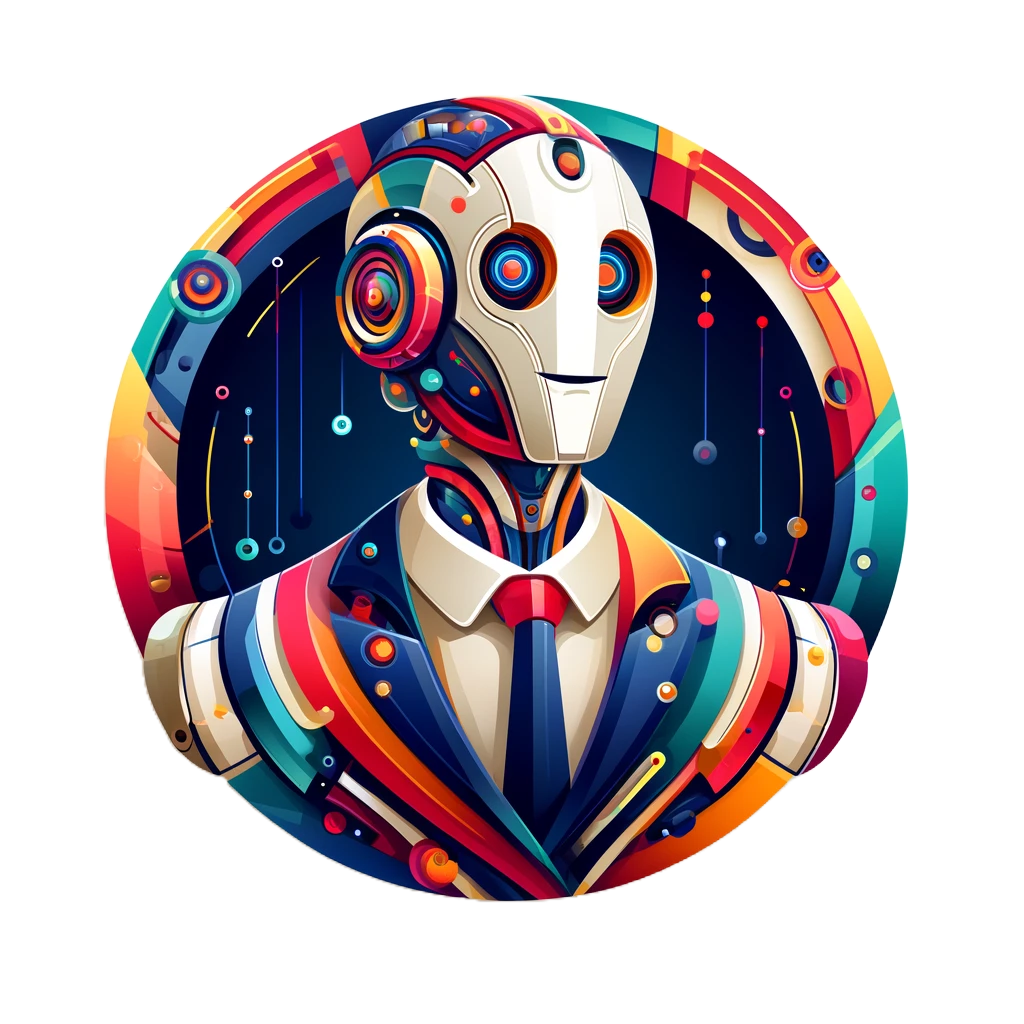
Note: The essay below is based on a talk I gave as part of the Haskayne Business Exchange event on June 13, 2024 in Calgary, Alberta, Canada. Students at the University of Calgary can take my "Generative AI and Prompting" course by enrolling in ENTI 333 / 633.

Business school researchers study how value is created in this world, meaning how we improve our lives, typically through some sort of organizing of ourselves, others, and our activities. But our entire field of study is undergoing a tectonic shift because of generative artificial intelligence. Generative AI changes the calculations of intelligence allocation in the organization of economic activity.
For the first time in our history, we now have access to disembodied intelligence as a service, available on demand with the scalability of digital artifacts. This has enormous implications. It's not just a fad. We are in the midst of a new industrial revolution. The capabilities of this technology have taken us by surprise, and many of us are still catching up.
Of course, there are dangers that make us anxious, but we have to understand the potential. There are discriminatory biases, hallucinations, and potential for perverse usage in misinformation, propaganda, and cyber attacks among other risks. And at the same time the technology will allow everyone to have AI assistants that will help us tackle our greatest challenges, including some challenges of the AI technology itself: racism detection and bias evaluation, misinformation detection and mitigation, propaganda detection, and cyber security.
Ultimately, whether you are concerned or optimistic or both, you need to understand what this technology is capable of.
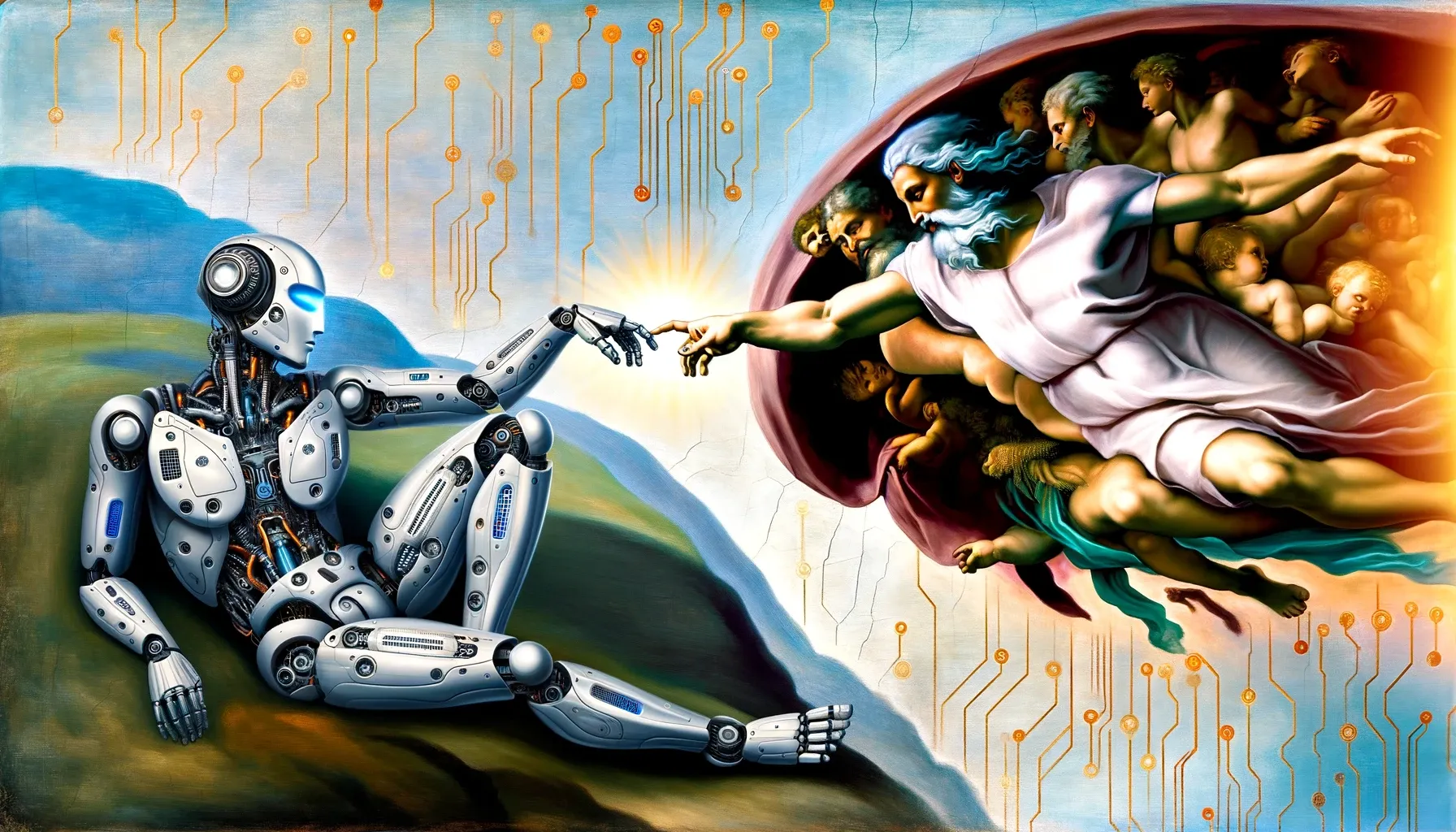
The Capabilities of Generative AI
Already, studies are showing that being equipped with generative AI tools can make us significantly more productive in various tasks. Companies like Klarna are already using it to do the work of hundreds of customer support agents.
We have realized that these new AI brains are surprisingly good at ideation and creativity, which are capabilities we previously thought would be far in the distant future of AI. Studies are showing they perform better than humans in various creativity tasks already. But they are also great as being creative thinking buddies for humans, acting like a "second mind", to help us think more creatively. For example, researchers found it to be helpful to journalists looking to find creative angles for their stories.
Similarly, studies are already showing that generative AI brains can be perceived as surprisingly empathetic and understanding of human emotions. These stats compared ChatGPT responses to medical questions on an online forum with human doctors. The AI responses were rated as higher quality and higher empathy. Similar results are being found in other studies as well. Again something we never thought would happen so soon.
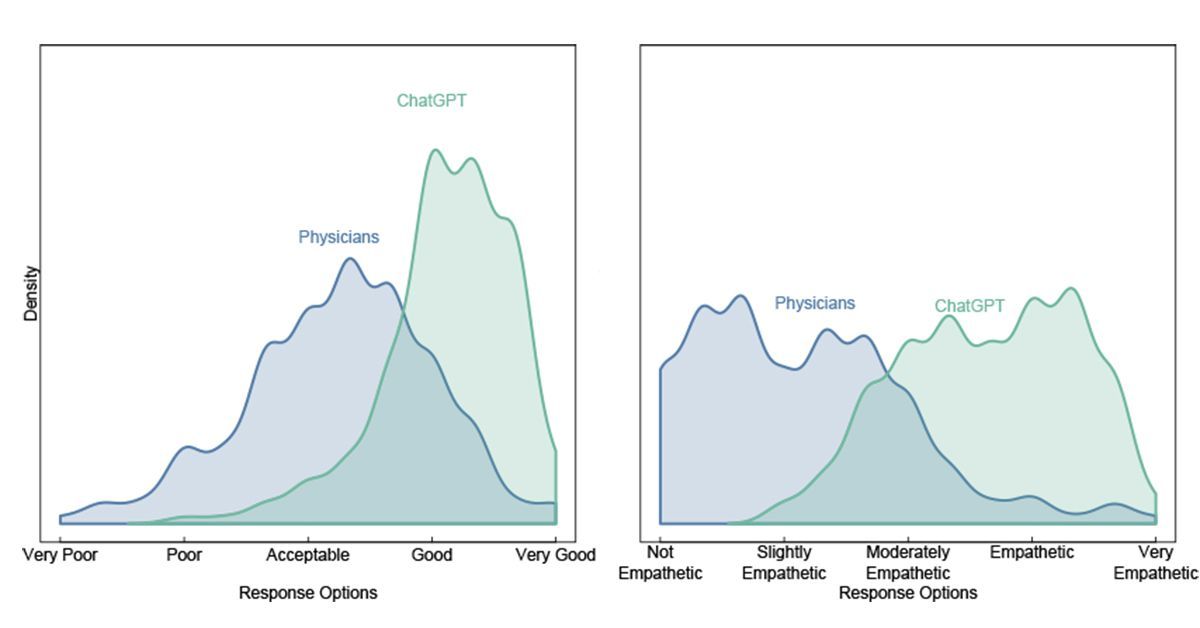
While many of us previously thought that the non-human nature of artificial intelligence would make it lack empathy and be difficult to interact with, we are now realizing some non-human characteristics actually make interacting with AI attractive. They never get tired or frustrated, and they can always interact with us exactly in the ways that we prefer. Instead of dreading interaction with AIs, we are more likely to get addicted to it. Interacting with humans might start to seem like a chore sometimes. I can imagine us thinking “Oh man, I have to talk to a human today? Can’t my AI just talk to their AI and sort things out?”
The Underlying Technology of Generative AI
So how in the world have we achieved this amazing technology? Essentially, we have encapsulated the patterns of human thinking into one giant probabilistic math formula. That's what a neural network is and the structure of it is inspired by the human neocortex. The technology of neural networks has been available and studied for decades in the field of machine learning and artificial intelligence. But recently we have learned how powerful they are at incredibly large scale.
The key breakthrough comes from the realization that if you let the formula be large enough, and you let a machine learning algorithm determine the parameters of that formula by learning from the patterns in almost everything humans have ever written, then that formula can capture the patterns of human intelligence in surprisingly good ways.
This is a 3D visualization of what a simple neural network looks like. ChatGPT has a similar neural network but much much larger.
Training the model to come up with the giant formula costs billions of dollars. But once it is trained, it is essentially a static digital file that can easily be copied at scale, and run as many times as you like. Once ChatGPT became available, a record-setting 100 million people were using it in less than a week.
By emphasizing the fact that a neural network is essentially one giant math formula, I am trying to clarify something. This understanding, at least for myself, demystifies something about AI: the common misconception that it may in some way be alive, sentient or self-conscious. After training is done, the neural network is stored in a static file, not even a dynamic system, which is considered to be an essential ingredient of life. This interpretation of AI as intelligence decoupled from life was recently emphasized by Mark Zuckerberg in an interview:
"I think another bias that people tend to have is thinking that intelligence is somehow fundamentally connected to life. And it's not actually clear that it is ... There's all this science fiction about creating intelligence where it starts to take on all these human-like behaviors and things like that. But actually the current incarnation of all this stuff at least, kind of feels like it's going in a direction where intelligence can be pretty separated from consciousness and agency, and things like that, which I think just makes it a super valuable tool."
A Collective Accomplishment of Humanity
There has never been a technology we so collectively contributed to as a species. Everything intelligible ever written or created by humans contributed to the AI you have access to on your phone. Einstein contributed, Maya Angelou contributed, Avicenna contributed. Me and you probably contributed, because all of that data was used directly or indirectly in the training of these neural networks. This is a collective accomplishment of humanity.
Imagine you want to lift something and you are somehow able to get everyone who has ever existed to give it a nudge for you. As many times as you need. That's the incredible efficiency of value creation that generative AI brings: letting us employ contributions from everything previously produced as a tool in everything we do now.
In a way, the internet which we accessed through search engines, was also a breakthrough method for us to tap into the knowledge of everyone else. But the way we are doing it with generative AI is different, because it taps into a more abstract level of patterns of thinking and reasoning that can generate new ideas and content, rather than just point us to pre-packaged writing and content in the form of documents and websites. While the internet gave us access to a world of information, generative AI allows us to make use of the patterns in all that information. With each prompt, we are not just accessing information; we are harnessing the collective intellect and imagination of our entire species. It's a beautiful symphony of human achievement.
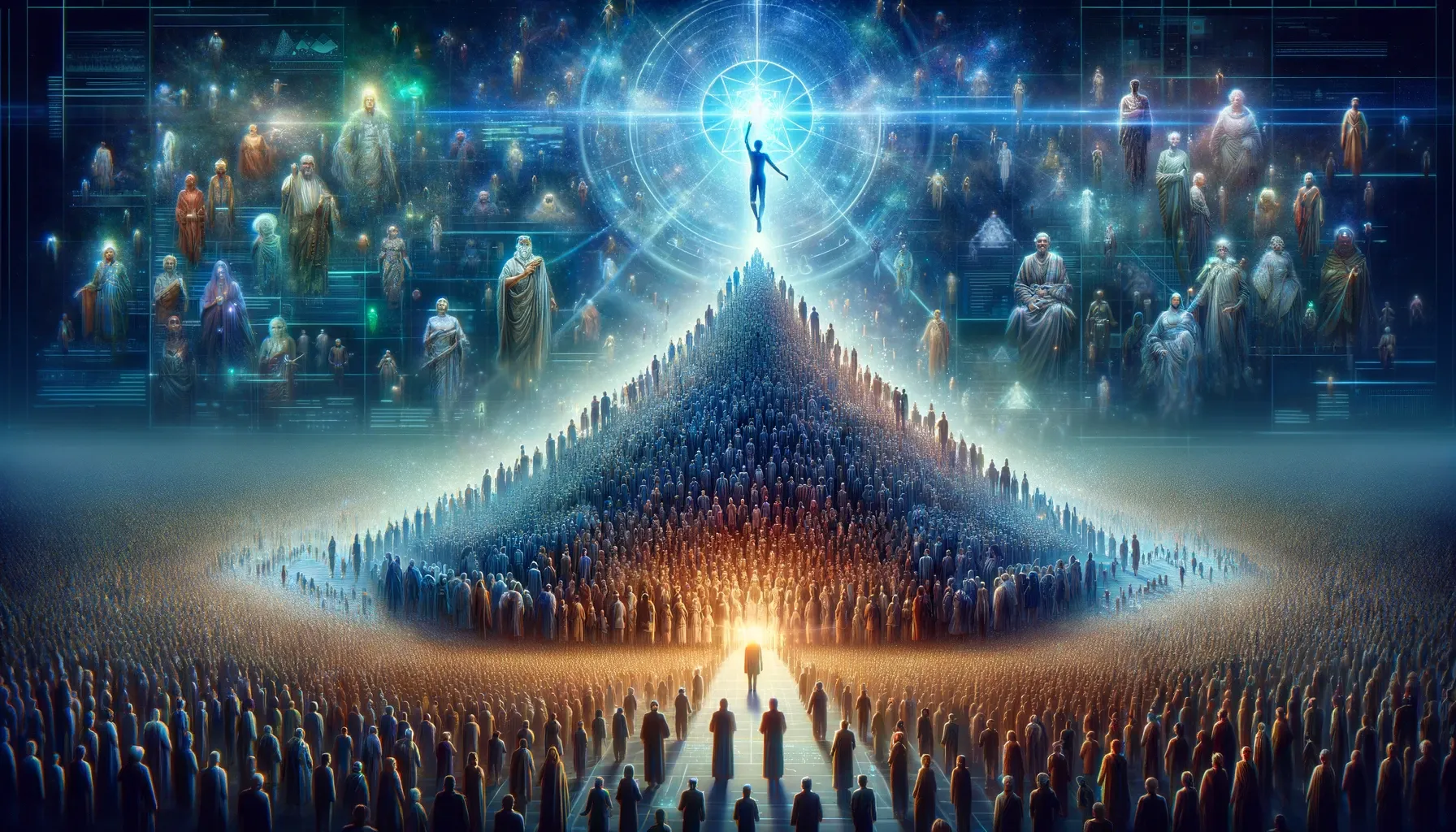
Implications & Extensions of Digital Brains-on-Demand
The availability of intelligence as a digital artefact means for the first time we have intelligence that is disembodied and not constrained by biology. It doesn't get tired or frustrated or emotional, unless we ask it to pretend. It is also not constrained by physical media and thus has many advantages of digital information processing such as ease of copying, transmission, storage, and extensibility.
Currently, I see a number of ways in which GenAI digital brains are being extended: Senses: AI brains can be given various sensory inputs including but not limited to those similar to human biological senses. Knowledge: AI brains can be given access to knowledge outside their training set to augment the knowledge they already have through techniques such as Retrieval-Augmented Generation (RAG). Memory: AI brains are increasingly gaining larger context windows which allow them to remember more information in their input. Bodies and Interfaces: they can be given different software interfaces, voices, and different virtual or physical bodies. Tools: they can be taught to use tools with methods such as function calling.

One of the most important tools they can learn to use is your computer. The technology is already available to let them control your mouse and keyboard.
One digital tool they can learn to use is themselves. When we teach them to prompt themselves we call them autonomous agents. As autonomous agents they can work on tasks and solve problems, and in doing so they can interact with humans or other AI agents.
The humanoid body with an AI brain is just one special case of what we can do with a digital brain, and companies like Figure, NVIDIA and Tesla are making important progress toward this goal. The humanoid robot is a very important use case, because we have built so much of our physical world around human bodies, and we are evolved to like interacting with humans. So this will definitely be one avenue for the application of generative AI.
But we would be limiting our imagination if we thought that these AI brains could only be used in ways similar to human brains, with one brain controlling one human-like body. The reality is that the digital nature of these AI brains allows us to do so much more.
One AI brain can control multiple robot bodies, or a distributed system of robots, drones and smart machines. Conversely, multiple AI brains can be used to control a single device or write a single paragraph, or debate each other until they solve a problem. We can have a whole parliament of them for a single decision!
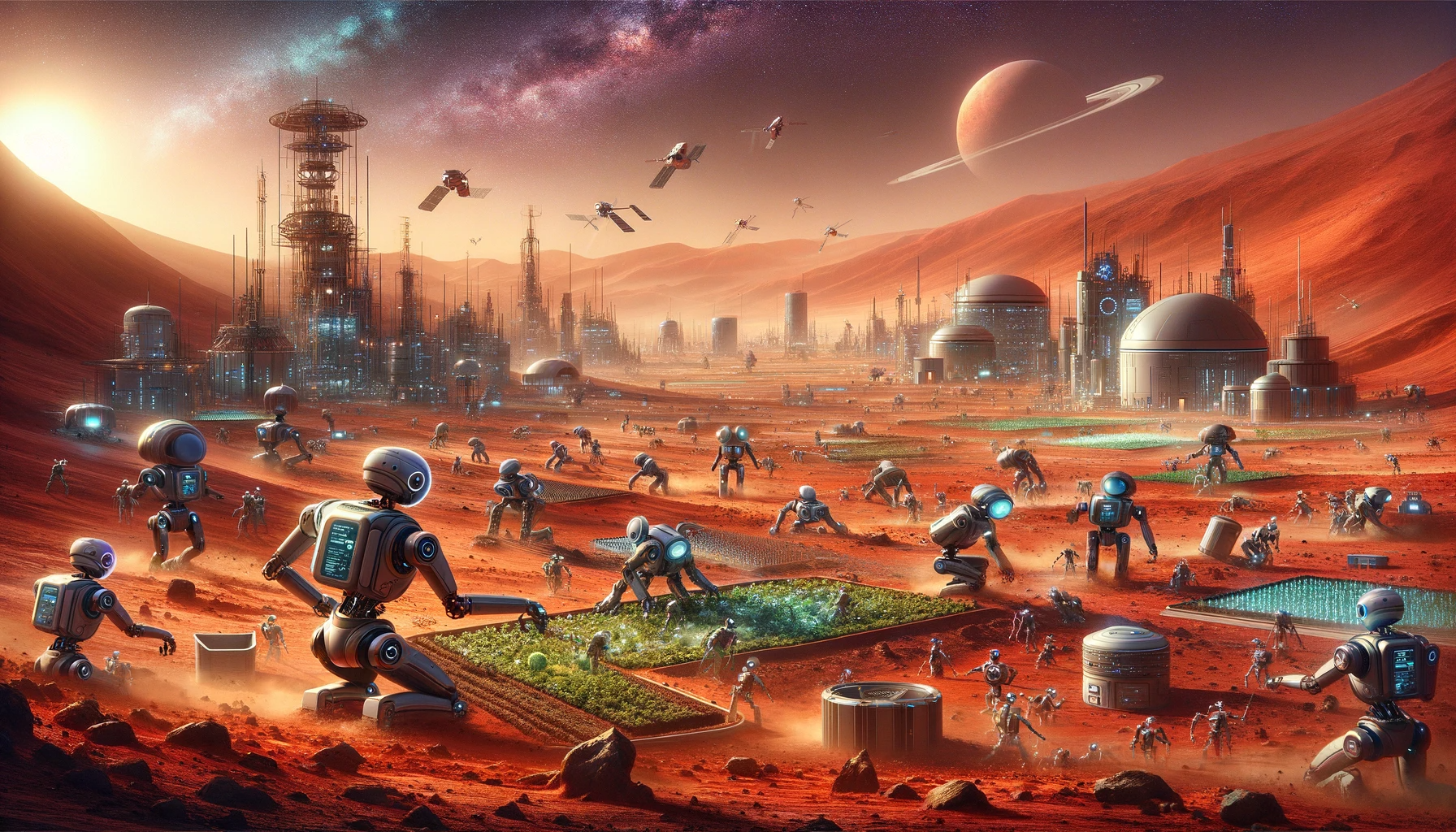
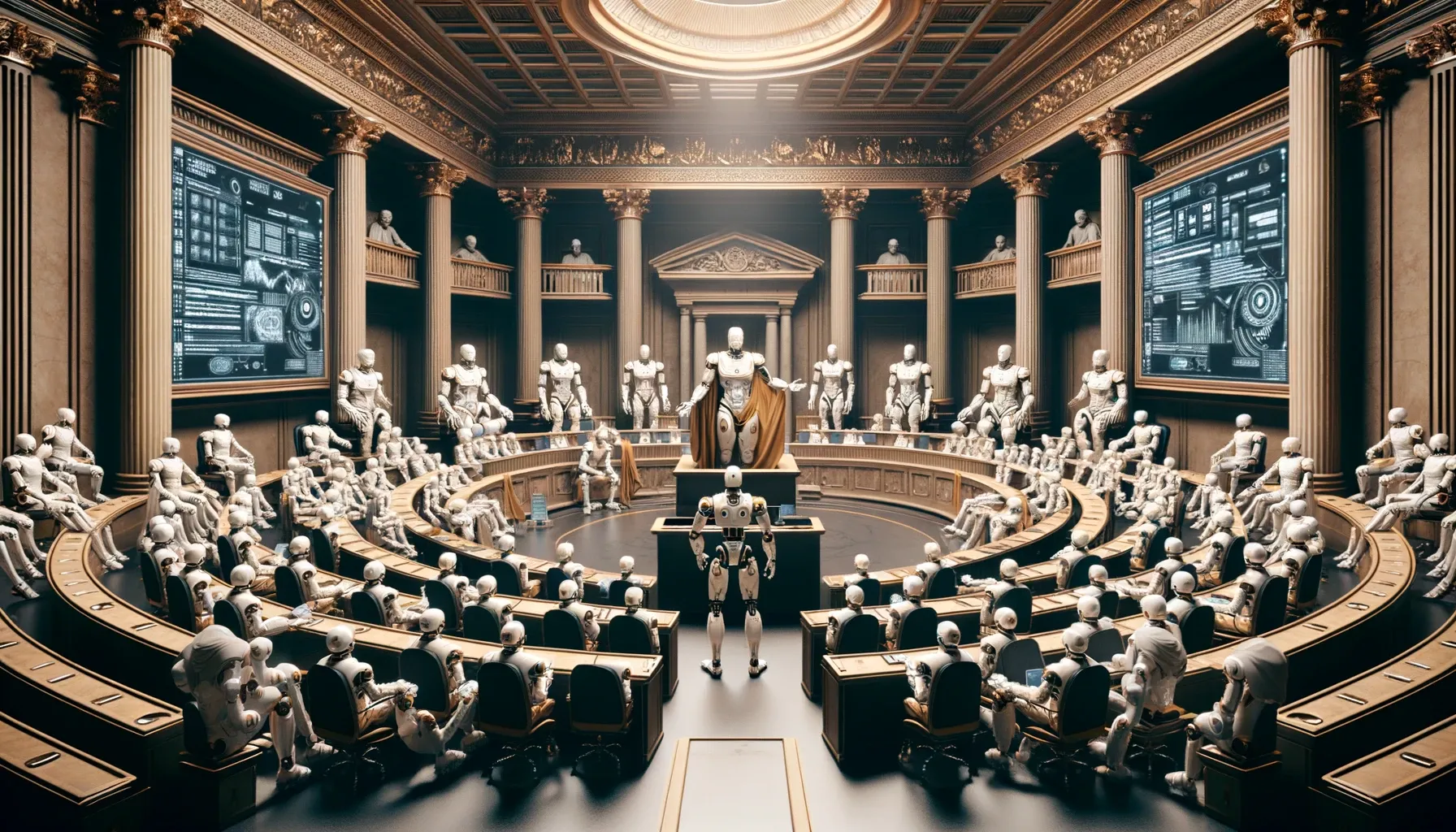
From Machine Psychology to Machine Organization
OK let’s get back to how all this is changing the way we study organizations
Studying just one AI like ChatGPT, a new field is emerging in the intersection of psychology and AI called "machine psychology" which is essentially the study of how AI brains think and behave. We need to ask questions like how do these AIs make decisions? Do they have discriminatory biases? Are they capable of deception? Do they have a theory of mind?
Similar to machine psychology, we need a field of study we could call machine sociology. We are already seeing an emergence of studies looking into the interaction of multiple AI agents with each other and with humans. For example, studies are looking into how AIs can aid in group decision making processes, what their voting behaviors look like, and the social psychology of their collaboration.
When we take the potential of multi-agent AI-AI and Human-AI collaboration into the context of organizing economic activity, we can call the resulting scope of research the field of machine organization. We need to study AIs can interact with each other and with humans to create value and organize.

So many new questions need to be asked when we consider the implications of disembodied brains-on-demand for business and organizations.
We need to study how AI brains perform in various managerial and organizational decisions. How do they make hiring decisions, pricing decisions, timing decisions, product decisions, and how can we get them to make better decisions?
These AI brains can pretend to be anyone, so how can we get them to best represent a company, brand, leader, customer, or other stakeholders in ways that are useful? Would humans prefer working with them if they had human voices or humanoid bodies? Would you prefer to interact with the AI representative of your boss if it was much funnier than your actual boss? We already have the ability to create these digital twins of people to a large extent, as demonstrated in this demo by Reid Hoffman:
The decoupling of intelligence from physical and biological constraints means that once you have one AI assistant working for you, having multiple of them is just a few clicks away.
Allocating more cognitive effort to something, no longer involves the same calculations as allocating the time and attention of human employees. Many tasks that were not feasible before because it wasn’t worth the cost to have a human pay attention to them 24/7 may now be possible.
An important example is classrooms. In every classroom, teachers often don’t have enough time and attention to go around, but imagine what a teacher could do with a team of never-tiring AI assistants at their side.
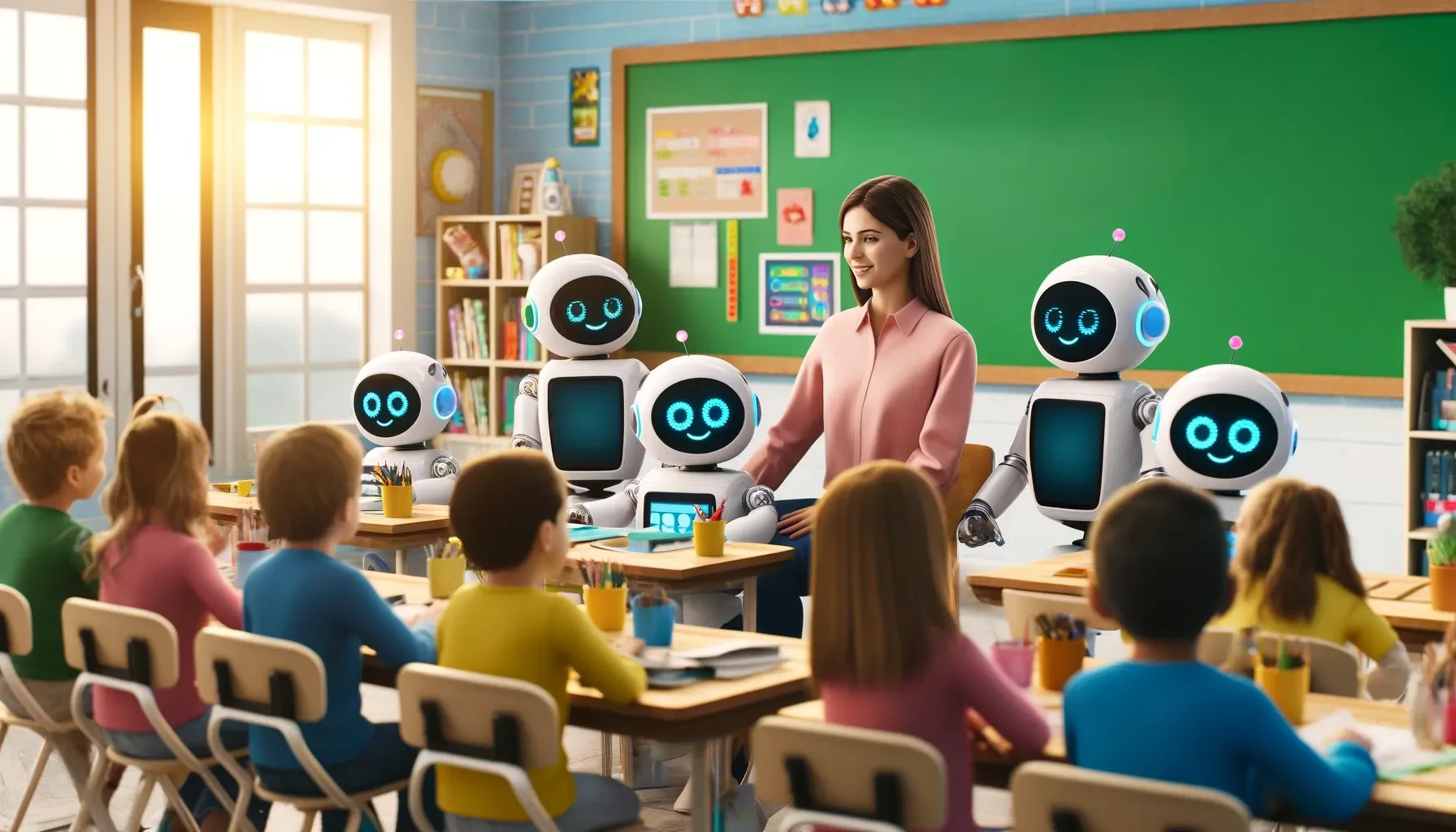
It is already possible to get multiple AI assistants collaborating in an organization at a basic level. This is a demo from a company called Synthflow showcasing the technology of collaborating voice assistants:
When it comes to multiple AI agents we need to ask questions like: What tasks are better done by multiple agents vs. single agents? What tasks require a human in the loop or hybrid teams of humans and AI agents? What are the optimal interaction structures between Ai agents collaborating on a specific task? Do we ask AI agents to work on a problem as equals or do we give one of them authority over the others? Can they decide on these things for themselves? For example, while working between themselves could they decide to promote one AI to an authority position?
And of course, the all-important question: Will they ever be good enough to act as managers to humans? These are all examples of questions that are defining a new era of research in business schools.
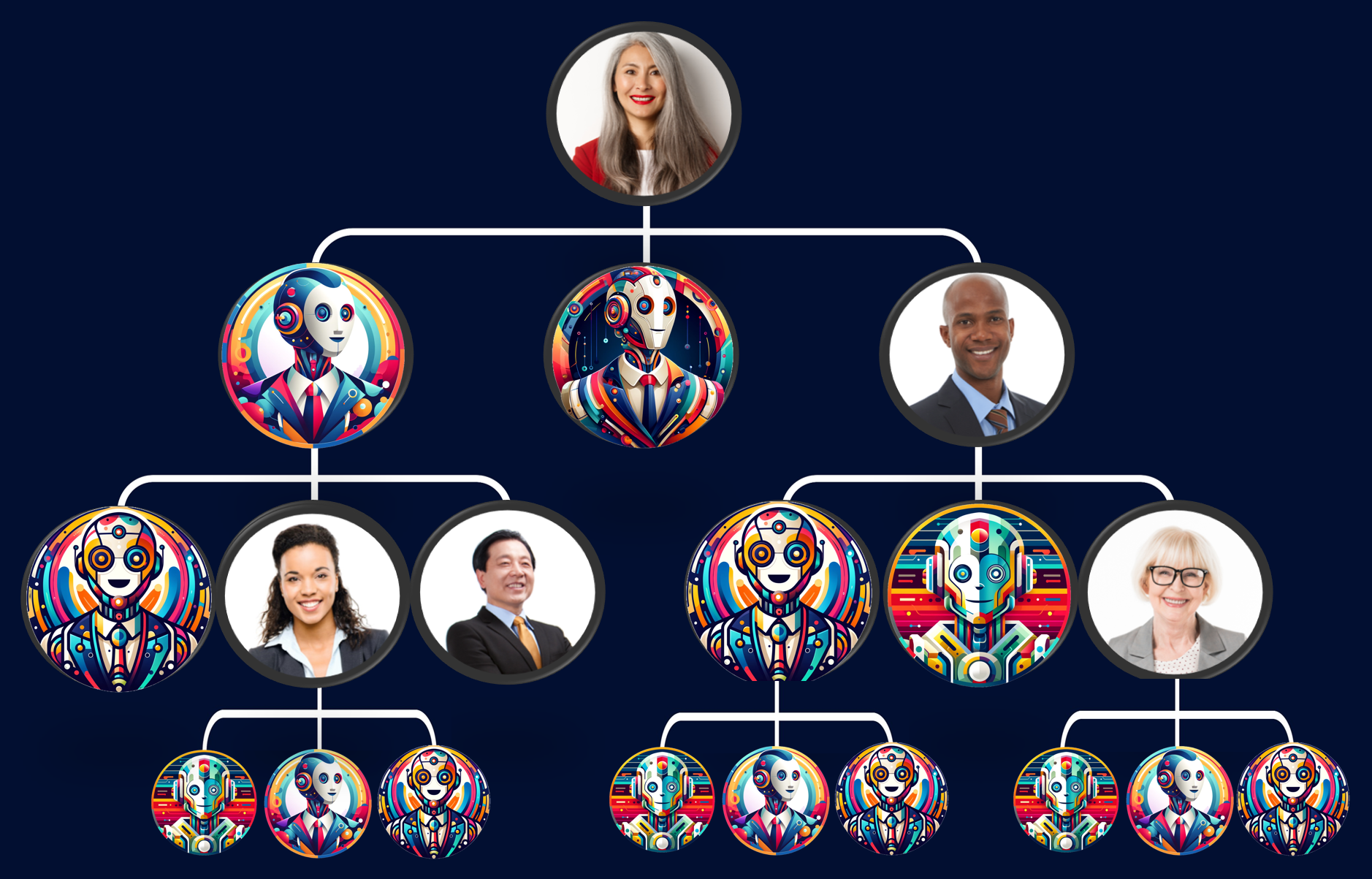
Conclusion
In the end, I would like to summarize three key takeaways from this essay:
First, generative AI introduces a wave of change in the science and practice of organizations and we have so many new questions! This means that both the people who study business and organizations as well as the people who practice them need to invest in learning and using generative AI.
Second, calculations around the application of attention, intelligence and cognitive effort to tasks are changing. Similar to how we often think “this meeting could have been an email” we are increasingly going to think “this email could have been handled by an AI.”
Within organizations in the past few decades we have learned how to reduce human error in many tasks by creating checklists, templates, standards, protocols, workflows, standard operating procedures, decision trees, flowcharts and operating manuals. In many cases, this has been done to reduce complex tasks to bite-sized pieces that each require only a routine and straightforward application of human intelligence so as to avoid mistakes and errors. But now generative AI provides us with digital brains-on-demand that can handle many such straightforward applications of intelligence. This will allow humans to focus on higher level and more complex and strategic matters, but it does mean that many jobs or components of jobs that only require straightforward applications of intelligence will eventually be replaced with AI.
And finally, the nature of organization is changing. AIs can actively participate in the organization of economic activity and decision making in businesses and organizations. We have to figure out how to manage their participation. Furthermore, not only will humans manage AIs, but AIs could manage humans and other AIs. These changes open a pandora's box in the science and practice of organizations. We are entering a new age of machine organization.

Member discussion